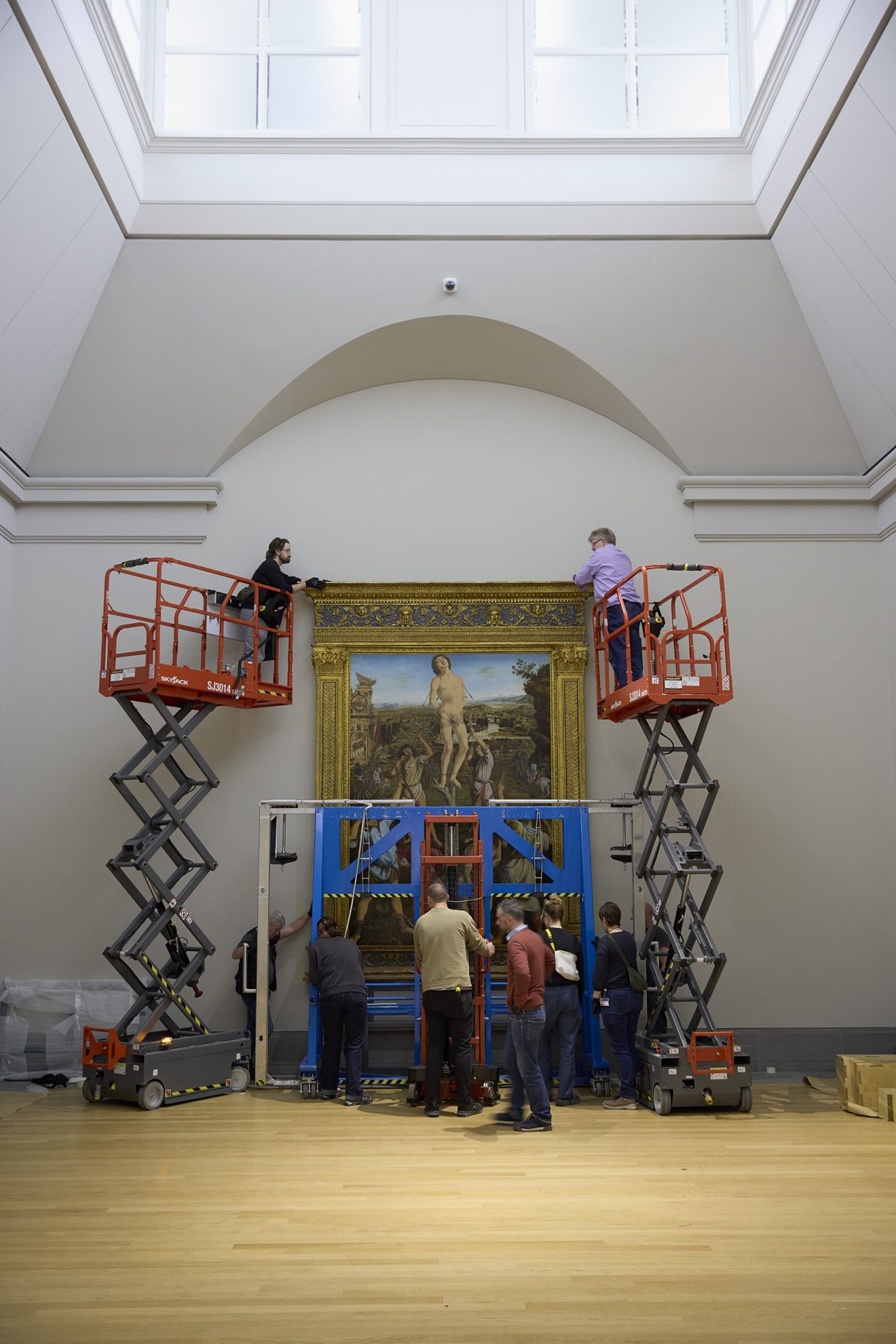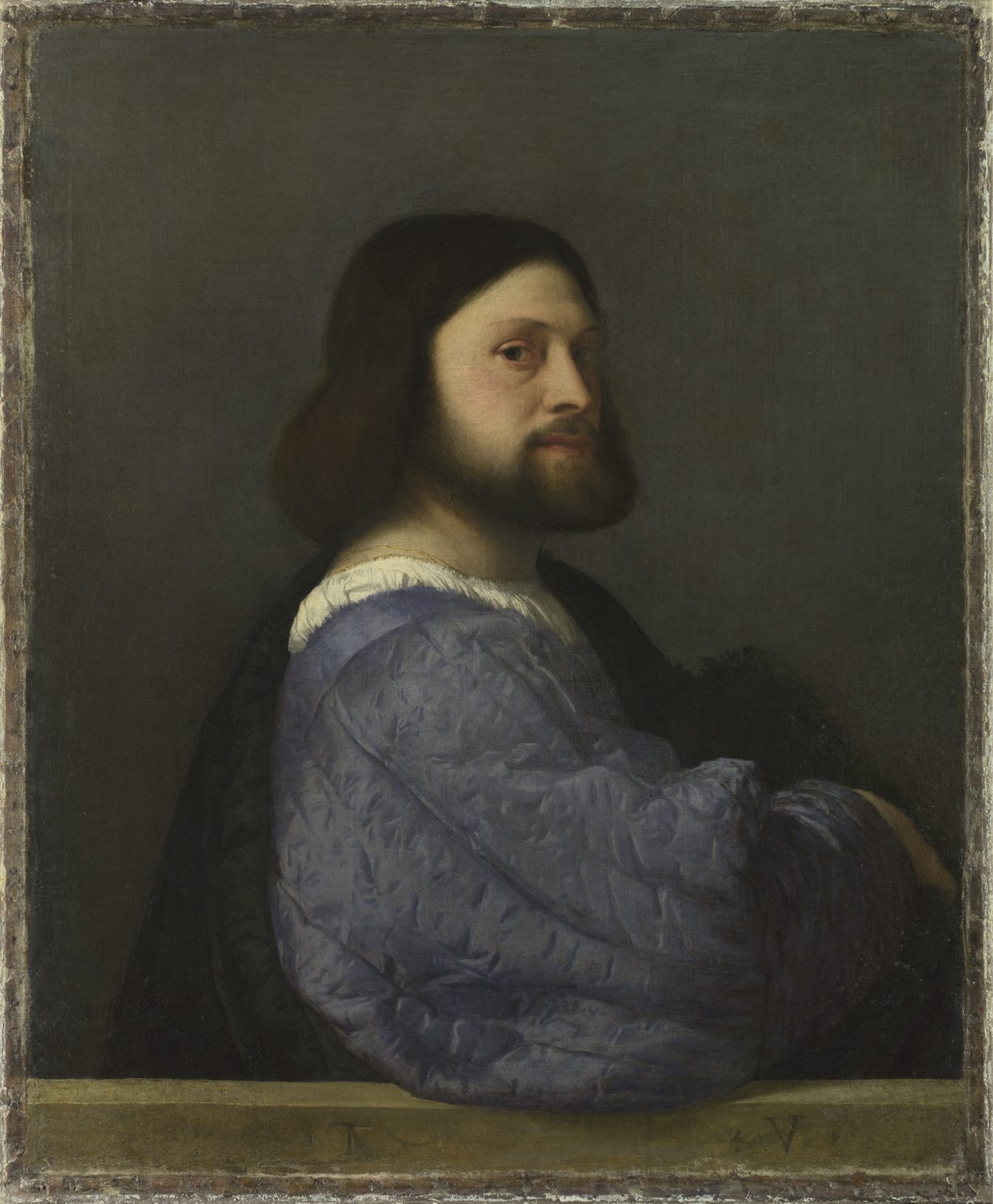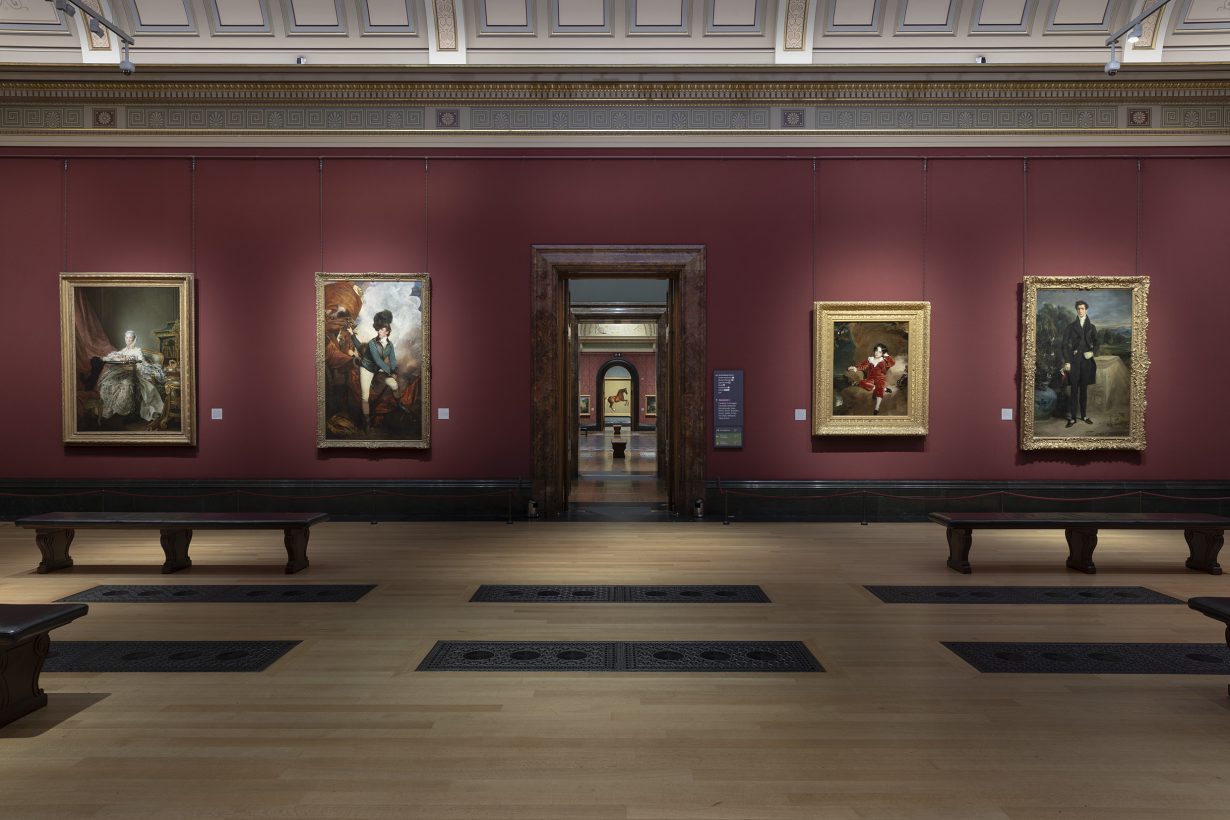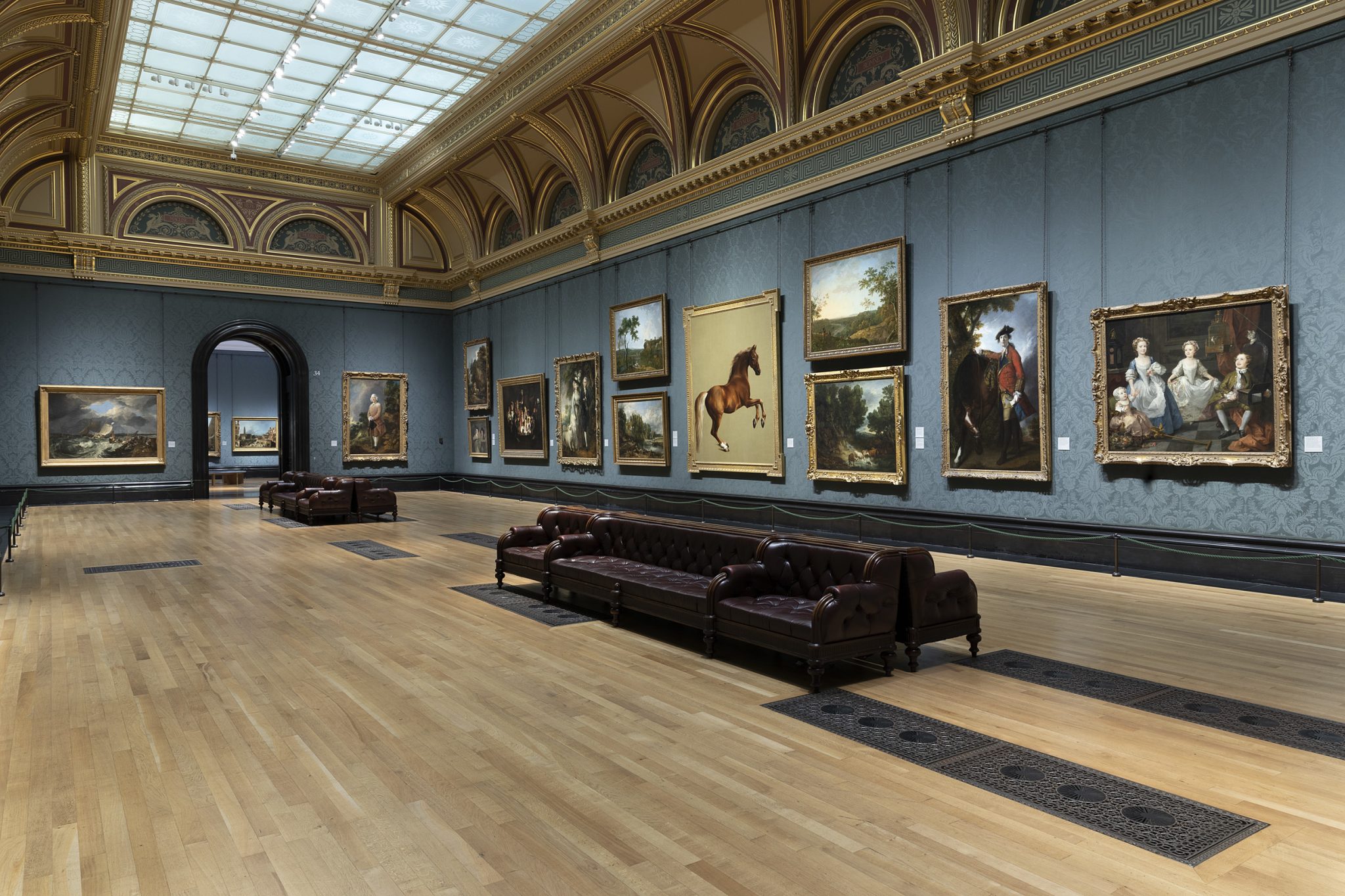The gallery’s much heralded rehang avoids burdening the art of the past with the politics of today as it reconsiders what the modern visitor really wants
The National Gallery has always had trouble with its entrances. The first gallery, a house on Pall Mall, suffered subsidence. The architect of the gallery’s current home on Trafalgar Square, William Wilkins, was obliged for reasons of cost to make an entrance with columns salvaged from a demolished home of the former Prince of Wales. When it opened in 1838, the design was universally lamented and Wilkins’s reputation never recovered.
During the 1980s a new entrance was required for an extension built to the west of the gallery on a bombsite. But another Prince of Wales (now King Charles) declared ABK Architects’ proposed design a ‘monstrous carbuncle’. He was right and it was scrapped. The replacement scheme by Robert Venturi and Denise Scott Brown mimicked poor Wilkins’s neoclassical facade outside, yet inside recreated the air of a Florentine Renaissance church, with white walls and grey ‘pietra serena’ sandstone columns. This was perfect for hanging the gallery’s early devotional Renaissance paintings, but it created a new entrance challenge. Venturi and Scott Brown wanted visitors to enter what is now called the Sainsbury Wing through a deliberately darkened, compressed space before emerging into the light, art-filled rooms upstairs.
In time, however, the entrance became cluttered with signage and desks, and was considered by the gallery’s current leadership to be off-putting. ‘The modern visitor’, said deputy director Paul Gray in an interview this month, ‘expects so much more now. They want big, open, welcoming spaces, and it never felt like that.’ Thus in 2021 it was deemed necessary to rebuild the Sainsbury Wing entrance. The New York-based architect Annabelle Selldorf was chosen as part of a £35 million project. Her view on the previous entrance? ‘I have never entered a church through a crypt.’
So now you must enter through what feels like an underground car park instead. I’m afraid there is no other way to describe it. Selldorf’s entrance is certainly big and open, but the expanse of low ceiling and cold stone floor is far from welcoming. A giant television screen at the end of this oppressive vista tries vainly to lift the mood with digital images of the art upstairs, but any architectural vision that relies on technology has already admitted defeat. It’s just as well the National Gallery is committed to free entry, or you’d be looking for the Pay & Display.

Enough of entrances. What’s in the galleries matters more, as even the ‘modern visitor’ knows. For the last three years the closure of the Sainsbury Wing has caused the rest of the collection to be displayed hither and thither in about half the usually available space. To see all the rooms open again, and the collection allowed to breathe, is to experience a moment of euphoria. A series of tasteful room refurbishments, introducing just the right degree of blingy sumptuousness, has been completed in time to mark the National Gallery’s 200th anniversary.
There has also been a much heralded ‘rehang’. Rehangs used to mean little more than moving pictures about, either to refresh displays or rotate works from storage. Now they encompass a reenvisioning of what is shown across the entire gallery, as well as how it is interpreted for visitors (through labels, audio guides and so on). For those of us who like galleries to be more flexible, with something new to offer the regular visitor, the modern rehang represents an unwelcome fixing of displays for years to come. What you see is what you get.
But rehangs at least have the benefit of making an institution reflect deeply on its purpose. On one level, somewhere like the National Gallery shouldn’t have too much to ponder: it’s almost exclusively a collection of Western painting. Unlike most other art galleries, there’s no sculpture, and no drawings either (the British Museum was judged the best home for these). Curiously for a national gallery, it’s also largely devoid of British art; most of the British pictures (deemed inferior to other European schools) were transferred to the Tate Gallery in 1919.

Rehangs, however, can go badly wrong. Because art galleries are artificial constructs, filled with objects removed from their original contexts, they are inevitably also political constructs. And when you mix rehangs with politics, you get in trouble, because it brings a temptation to impose contemporary political issues onto the art of another age. Especially when you’re in the middle of a culture war.
Broadly, there are three issues here. First, whether cultural institutions and the collections within them can be used to address contemporary political questions, such as how to tackle climate change. Second, the extent to which historic injustices, such as colonialism, should be highlighted when we are invited to enjoy the art that emerged from a colonial age. And finally, whether a collection that, due mainly to historical circumstance, may consist of works made by one particular section of society can effectively appeal to visitors who come from more diverse backgrounds.
Those of us who are more sceptical about burdening the art of the past with the politics of today – who think it’s a little self-centred to demand that paintings made hundreds of years ago be about us – can be cast as not caring about, say, climate change, historical injustice or diversity. I do care. I also care about bringing the beauty, joy, revelations, benefits, problems and horrors of art and history to as many people as possible. So I wince when I see it done badly.

Tate Britain’s 2023 rehang looked nice enough, in terms of the arrangement of the paintings. It considerably increased the representation of women artists in the historic galleries, with a number of newly discovered works from the collection. But in places the interpretation was unfortunate. Some labels wilfully misinterpreted what an artist was trying to convey. To address anxieties over what could not be on display (for example, art made by the marginalised, enslaved or oppressed), Tate resorted to gimmicks, including ‘contemporary interventions’ of art commissioned to make a political point. In one room visitors must listen to a narration giving the view of those deemed at the opposite end of the social order from those in the paintings (it is on permanent loop, and quite loud).
Such an approach not only risks patronising visitors, but turning them away. Not because of the aims – the role of slavery and colonialism in the production of much of the art in Tate Britain is a vital context – but the means. It’s probably not a coincidence that Tate Britain’s visitor numbers are in decline. Some people go to a gallery to be challenged, some for education and others – most, I suspect – for pleasure. It is this last group who are most easily catered for by the art itself; objects made by the talented in pursuit of a kind of exalted happiness have a habit of delivering it, but get the display wrong and it doesn’t take much to diminish that happiness. In my experience, you make art accessible by telling the right story about it. There is a balance to be struck between education and entertainment, even if that runs counter to a more instrumentalist understanding in the museum sector about what the modern visitor really wants, or deserves.

Would the National Gallery’s rehang fall prey to similar pressures, with its historic, Eurocentric collection? The institution was, after all, founded with an avowedly political aim: to ‘cement the bonds of union between the richer and the poorer orders of the state’, according to the then prime minister, Sir Robert Peel. Its building was designed as a temple to art for a new imperial age (hence those recycled columns). We might not be surprised if the new rehang reflected a faltering confidence in the value of a collection some would deem to be – dread phrase – ‘problematic’.
I am glad to report that the National Gallery’s rehang is a model of good sense. They have got the balance right, and they tell the right stories. Labels inform – the panel in the British room rightly highlights slavery and colonialism – but do not hector. There are no loudspeakers and no misplaced contemporary artworks. The interpretation focuses on who made the art and how, with trickier questions of why they made it answered in the context of their own time, not ours. The pictures are arranged broadly chronologically and by school, giving an unapologetic view of how Western painting evolved. To eschew many of the prevailing curatorial and art historical trends took some courage from the National Gallery staff, including the head of collections and research, Christine Riding, and director Gabriele Finaldi. The nation’s preeminent art gallery has demonstrated much-needed leadership to all the others. I think it will be a hit with visitors, and that most visitors – whatever their background – still go to a gallery in pursuit of exalted happiness. This rehang delivers it.
And what a hang. It is busy, to get as many masterpieces on display as possible, but not crowded. It is clever too – in the Rotunda, three of Turner’s greatest works face off against three of Constable’s. There are blockbuster rooms; one has 18 Rembrandts. The Titian room actually took my breath away. There are more intimate rooms, for sketches and still lifes. Some exceptional loans from private collections bring new highlights, while a series of Royal Collection loans points to a welcome redistribution of the King’s pictures. With some relief, I say the National Gallery has never looked better. The entrance may still be a problem – but given the gallery’s history, it probably always will be.
Bendor Grosvenor is an art historian and writer. His latest book, The Invention of British Art, is out now
